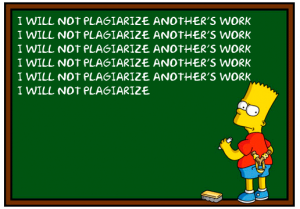Back in September, I floated an idea about or moral judgments: that intervening causes between an action and outcome could serve to partially mitigate their severity. This would owe itself to the potential that each intervening cause has for presenting a new potential target of moral responsibility and blame (i.e. “if only the parents had properly locked up their liquor cabinet, then their son wouldn’t have gotten drunk and wrecked their car”). As the number of these intervening causes increases, the potential number of blameable targets increases, which should be expected to diminish the ability of third-party condemners to achieve any kind of coordination their decisions. Without coordination, enacting moral punishment becomes costlier, all else being equal, and thus we might expect people to condemn others less harshly in such situations. Well, as it turns out, there’s some research that has been conducted on this topic a mere four decades ago that I was unaware of at the time. Someone call Cold Stone, because it seems I’ve been scooped again.
One of these studies comes from Brickman et al (1975), and involved examining how people would assign responsibility for a car accident that had more than one potential cause. Since there are a number of comparisons and causes I’ll be discussing, I’ve labeled them for ease of following along. The first of these causes were proximate in nature: internal alone (1. a man hit a tree because he wasn’t looking at the road) or external alone (2. a man hit a tree because his steering failed). However, there were also two ultimate causes for these proximate causes, leading to four additional sets: two internal (3. a man hit a tree because he wasn’t looking at the road; he wasn’t looking at the road because he was daydreaming), two external (4. a man hit a tree because his steering failed; his steering failed because the mechanic had assembled it poorly when repairing it), or a mix of the two. The first of these (5) mixes was a man hitting a tree because his steering failed, but his steering failed because he had neglected to get it checked in over a year; the second (6) concerned a man hitting a tree because he wasn’t paying attention to the road due to someone on the side of the road yelling.
After the participants had read about one of these scenarios, they were asked to indicate how responsible the driver was for the accident, how foreseeable the accident was, and how much control the driver had in the situation. Internal causes for the accident resulted in higher scores on all these variables relative to external ones (1 vs. 2). There’s nothing too surprising there: people get blamed less for their steering failing than their not paying attention to the road. The next analysis compared the presence of one type of cause alone to that type of cause with an identical ultimate cause (1 vs. 3, and 2 vs. 4). When both proximate and ultimate causes were internal (1 vs 3), no difference was observed in the judgments of responsibility. However, when both proximate and ultimate causes were external (2 vs. 4), moral condemnation appeared to be softened by the presence of an ultimate explanation. Two internal causes didn’t budge judgments from a single cause, but two external judgments diminished perceptions of responsibility beyond a single one.
Next, Brickman et al (1975) turned to the matter of what happens when the proximate and ultimate causes were of different types (1 vs. 6 and 2 vs. 5). When the proximate cause was internal but the ultimate cause was external (1 vs. 6), there was a drop in judgments of moral responsibility (from 5.4 to 3.7 on a 0 to 6 scale), foreseeability (from 3.7 to 2.4), and control (from 3.4 to 2.7). The exact opposite trend was observed when the proximate cause was external, but the ultimate cause was internal 2 vs. 5). In that case, there was an increase in judgments of responsibility (from 2.3 to 4.1), foreseeability (from 2.3 to 3.4) and control (2.6 to 3.4). As Brickman et al (1975) put it:
“…the nature of prior cause eliminated the effects of the immediate cause on attributions of foreseeability and control, although a main effect of immediate cause remained for attributions of responsibility,”
So that’s some pretty neat stuff and, despite the research not being specifically about the topic, I think these findings might have some broader implications for understanding the opposition to evolutionary psychology more generally.
They’re so broad people with higher BMIs might call the suggestion insensitive.
As a fair warning, this section will contain a fair bit of speculation, since there doesn’t exist much data (that I know of, anyway) bearing on people’s opposition towards evolutionary explanations. That said, let’s talk about what anecdata we do have. The first curious thing that has struck me about the opposition to certain evolutionary hypotheses is that they tend to focus exclusively or nearly-exclusively on topics that have some moral relevance. I’ve seen fairly-common complaints about evolutionary explanations for hypotheses that concern moralized topics like violence, sexual behavior, sexual orientation, and male/female differences. What you don’t tend to see are complaints about research in areas that do not tend to be moralized, like vision, language, or taste preference. That’s not to say that such objections don’t ever crop up, of course; just that complaints about the latter do not appear to be as frequent or protracted as the former. Further, when the latter topics do appear, it’s typically in the middle of some other moral issue surrounding the topic.
This piece of anecdata ties in with another, related piece: one of the more common complaints against evolutionary explanations is that people perceive evolutionary researchers as trying to justify some particular morally-blameworthy behavior. The criticism, misguided as is it, tends to go something like this: “if [Behavior X] is the product of selection, then we can’t hold people accountable for what they do. Further, we can’t hope to do much to change people’s behavior, so why bother?”. As the old saying goes, if some behavior is the product of selection, we might as well just lie back and think of England. Since people don’t want to just accept these behaviors (and because they note, correctly, that behavior is modifiable), they go on to suggest that it’s the ultimate explanation must be wrong, rather than their assessment of its implications.
“Whatever; go ahead and kill people, I guess. I don’t care…”
The similarities between these criticisms of evolutionary hypotheses and the current study are particularly striking: if selection is responsible for people’s behavior, then the people themselves seem to be less responsible and in control of their behavior. Since people want to condemn others for this behavior, they have a strategic interest in downplaying the role of other causes in generating it. The fewer potential causes for a behavior there are the more easily moral condemnation can be targeted, and the more likely others are to join in the punishment. It doesn’t hurt that what ultimate explanations are invoked – patriarchy being the most common, in my experience – are also things that these people are interesting in morally condemning.
What’s interesting – and perhaps ironic – about the whole issue to me is that there are also the parallels to the debates people have about free will and moral responsibility. Let’s grant that the aforementioned criticisms were accurate and evolutionary explanations offer some kind of justification for things like murder, rape, and the like. It would seem, then, that such evolutionary explanations could similarly justify the moral condemnation and punishment of such behaviors just as well. Surely, there are adaptations we possess to avoid outcomes like being killed, and we also possess adaptations capable of condemning such behavior. We wouldn’t need to justify our condemnation of them anymore than people would need to justify their committing the act itself. If murder could be justified, then surely punishing murders could be as well.
References: Brickman, P., Ryan, K., & Wortman, C. (1975). Causal chains: Attribution of responsibility as a function of immediate and prior causes. Journal of Personality and Social Psychology, 32, 1060-1067.













